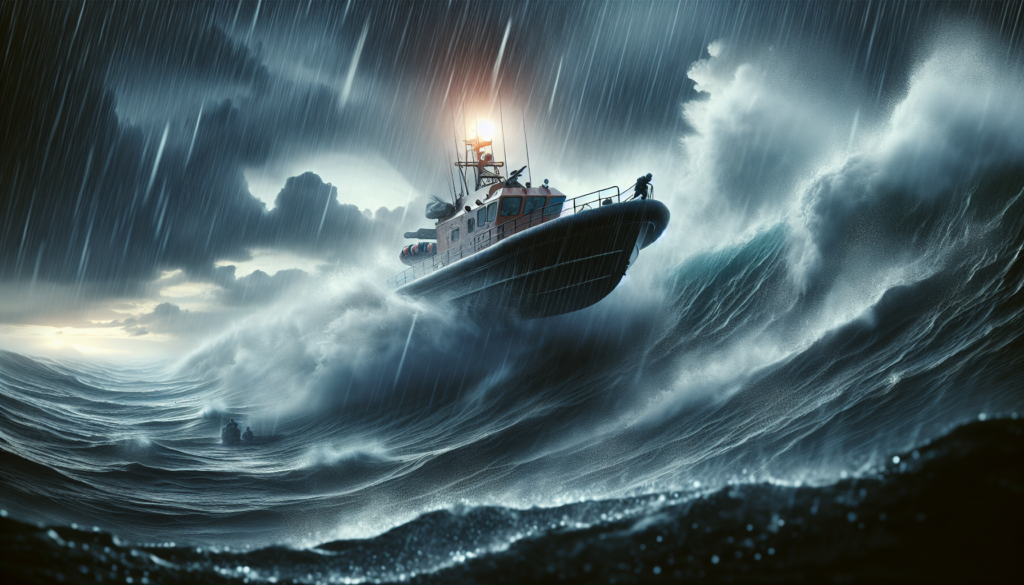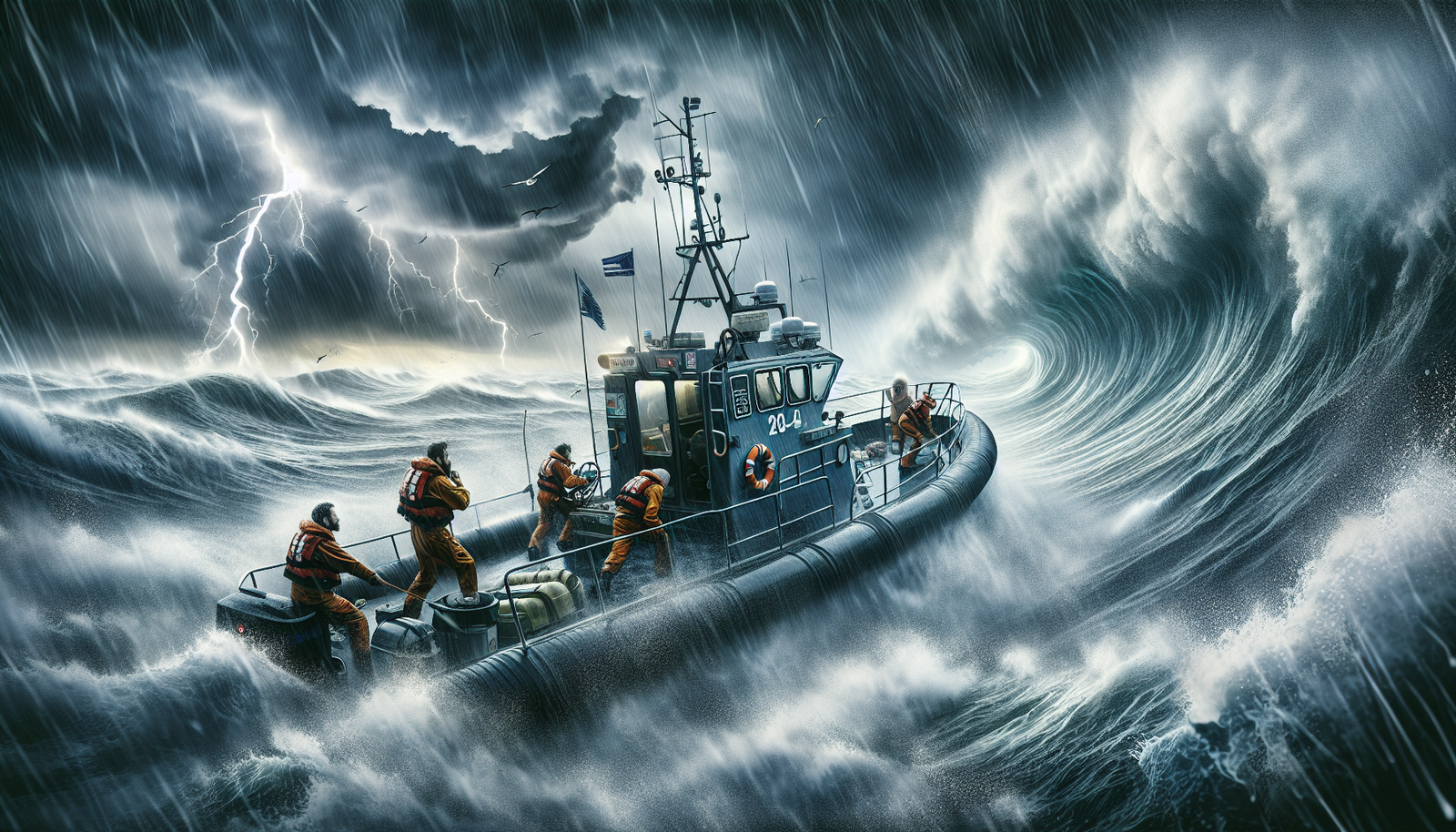Imagine yourself amidst the catastrophic aftermath of a destructive natural disaster, stranded with seemingly no immediate mode of transportation to lead you to safety. However, there is a seeming yet underappreciated hero in these situations – boats. Through a perusal of “Understanding The Role Of Boating In Natural Disaster Response And Recovery Efforts,” you’ll gain a rich comprehension of how these floating saviors are paramount in paving the way for relief efforts in dire times. Brace yourself for a mariner’s-eye view of rescue and recovery operations that spearhead disaster management worldwide.

The Importance of Boating in Disaster Response
When natural disasters strike, the response effort can be vast and complex. It requires a combination of land, air, and water transportation to achieve successful disaster response and recovery operations, and one such critical aspect is boating. In this context, we’re talking about the role and importance of boating, not as a recreational activity, but as a lifeline that connects disaster-struck areas with relief measures.
Definition of Disaster Response
Disaster response refers to the measures, actions, and strategies instigated to deal with emergencies, calamities, and unpredictable natural disasters such as floods, hurricanes, tsunamis among others. These actions are aimed at supporting affected areas, minimizing casualties, and providing rescue, relief, and recovery to the affected people.
Quick Response and Accessibility through Waterways
Waterways often provide the quickest and most accessible route, especially when roads are blocked or damaged due to disasters. Boats can navigate through flooded streets, reach remote areas cut off by calamities, and deliver essential resources such as food, water, medical supplies, and personnel.
Boating as a Means of Evacuation and Transportation
During emergencies, boating serves as an essential means of evacuation, pulling people out from affected zones to safer areas. It becomes crucial to the transportation of relief materials and personnel to the disaster-struck areas.
Types of Boats Used in Disaster Response
Different types of boats are used in emergency resilience and recovery efforts, each with its unique capabilities and purpose.
Emergency Response Boats
These are generally used by emergency services – they are robust, fast, and built to withstand tough weather conditions. They come equipped with life-saving devices and tools to aid immediate relief and rescue operations.
Search and Rescue Boats
Search and rescue boats (SAR) are specialized vessels designed to conduct search and rescue operations. Their purpose is centered on locating and rescuing people stranded in water or flood-stricken areas.
Personal Watercrafts
Individual watercrafts such as kayaks and small boats can be used for disaster response, especially in cases where larger boats cannot reach. They are particularly useful in navigating through narrow waterways and densely built-up areas.
Inflatable Boats
Inflatable boats are lightweight, easy to transport, and capable of being deployed quickly. They are highly effective in rescue operations within narrow and difficult-to-reach areas.

Training of Disaster Responders in Navigating Boats
Operating boats in disaster conditions requires significant skill, knowledge, and training. Trained responders can make a considerable difference in the effectiveness of the disaster response.
Essential Training in Operating Boats
Initial training encompasses the fundamentals of operating boats, understanding water currents, winds, and navigation. Additional coaching includes managing heavy loads, ferrying people, and handling boats under extreme weather conditions.
Training on Safety Procedures
Safety training is integral for disaster responders. It includes understanding safety procedures in boat operations, managing emergencies, conducting rescue operations, and using life-saving equipment.
In-depth Knowledge Prerequisites for Disaster Responders
Disaster responders are required to have in-depth knowledge about different boats, their capabilities, limitations, and operating procedures. They also need to understand emergency medical procedures, survival techniques, and have strong problem-solving skills.
Boating Equipment Essential for Disaster Response
Operations on water require certain critical tools and equipment.
Life-saving Equipment
This involves items like life jackets, lifebuoys, flares, life rafts, and rescue nets, essential for rescuing and safeguarding lives during the operation.
Communication Tools
Communication devices like radios, GPS systems, and distress signal devices are crucial to staying connected with the disaster response units and for coordinating effectively.
Navigation Aids
Navigational tools are crucial for operating at sea or in unknown waterways. This includes compasses, map-reading instruments, and GPS navigation systems.
Emergency Medical Supplies
Emergency medical kits, healing tools, and other medical supplies are essential for providing immediate medical assistance to the injured or those in need.

Role of Boating in Disaster Recovery Efforts
Apart from the initial rescue and relief operations, boats also play a vital role in disaster recovery and rebuilding efforts.
Transportation of Resources
Boats are often used to transport bulk supplies, reconstruction materials, and heavy equipment, helping communities to rebuild and restore their homes and lives.
Assistance in Rebuilding Afflicted Areas
They can facilitate large-scale clean-up operations by transporting waste material and debris out of the affected areas.
Restoration of Normalcy in Transportation
Boats can provide a makeshift solution for commuting and maintaining connectivity till the time regular modes of transport like bridges and roads are restored.
Case Studies of Boat-mediated Disaster Response
The history of disaster response is filled with stories where boating played a crucial role in saving lives and aiding recovery efforts.
Role of Boating in Hurricane Katrina Response
During Hurricane Katrina, hundreds of boats operated by federal agencies, state governments, and private citizens saved numerous lives, showcasing the importance of a collective boating response.
The 2004 Tsunami Recovery Efforts
Boating was a significant component of the recovery efforts post the 2004 Tsunami, offering emergency evacuation, aid delivery, and restoring connectivity in several stricken coastal areas of South Asia.
Recent Examples of Disaster Response Involving Boating
In recent flood situations in various parts of the world, boats have been widely used for rescue operations, transporting relief materials, and helping in recovery efforts.

Potential Challenges in Disaster Response through Boating
Despite their utility, boating operations during disaster response can face several challenges.
Hazards on Water During Disasters
Hazards such as aggressive water currents, submerged obstacles, floating debris, and adverse weather can pose significant risks to the responders and the operation.
Limitations of Boating in Disaster Response
Some limitations include reachability to some areas, carrying capacity issues, and time-consuming processes.
Overcoming Challenges
Addressing these challenges requires proper planning, in-depth training, and use of appropriate technology and equipment.
Regulations and Policies on Boating in Disaster Response
Several regulations and policies govern the use of boats in disaster response, lying within the ambit of governmental regulations, international laws, and non-profit organization guidelines.
Government Rules and Regulations
Government policies have guidelines about using private and public boats for disaster response along with rules related to safety, operational procedures and coordination with disaster response agencies.
International Laws and Policies
International laws define the operational standards, safety procedures, and global cooperation guidelines for operations crossing the international borders or in international waters.
Role of Non-governmental Organizations
Non-profit organizations often work in tandem with government agencies, following established disaster response plans and adhering to instructions and regulations for operating boats during emergencies.
The Importance of Community Involvement in Boating Disaster Response
Communities have a significant role in disaster response efforts, and their active participation can support professional responders in making a significant difference.
Community Preparation for Boating Disasters
Communities can prepare themselves by having emergency plans in place, conducting drills, making safety arrangements, and owning/operating basic boats, thus becoming self-sufficient in the case of emergencies.
Volunteer Training and Contribution
Community members can volunteer to undergo training in basic boating operations and safety procedures, enabling them to assist professional responders.
Community-based Strategies for Effective Response
Communities can develop strategies for using local resources more effectively, such as mobilizing local boats and resources, thereby improving the overall response.
Future of Boating in Disaster Response
Boating will continue to be a critical aspect of disaster response. As technology advances, boating operations are set to become increasingly efficient, effective, and safe.
Technological Advancements for Improved Response
Technologies such as advanced navigation systems, drones, and autonomous boats can help in improving the accuracy and speed of rescue efforts and increasing the safety of responders.
Policy Changes and Their Implications
Policy changes can strengthen the roles of boating in disaster response, promoting public-private partnerships, encouraging technological innovations, and fostering community participation.
Boating, therefore, is a vital part of disaster response and recovery efforts, requiring proper planning, adequate resources, and strong community involvement. It presents its unique challenges but also offers unparalleled benefits and solutions amidst calamities and crises. With time and prudent policy-making, the future of boating in disaster response looks promising and increasingly crucial.

